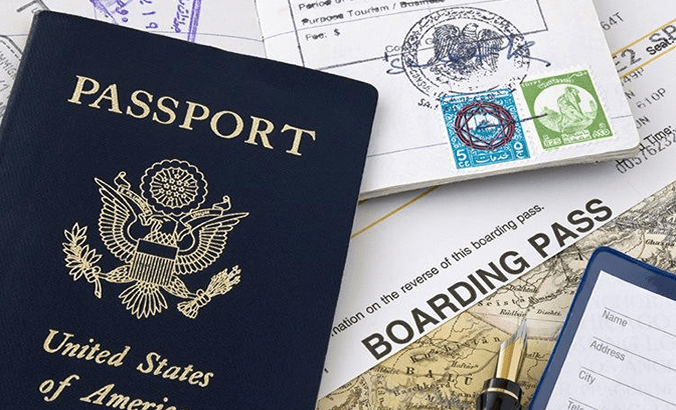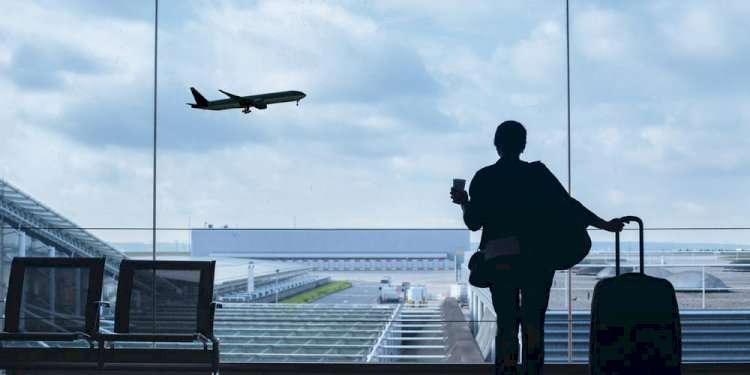When you’re on the road, each destination offers unique treasures that serve as reminders of your journey—whether it’s a delicate porcelain vase from Japan, a handwoven rug from Turkey, or a vintage wine from France. The challenge, however, lies in getting these souvenirs home safely and cost-effectively. This guide will take you step-by-step through the entire process of sending souvenirs and gifts back home while traveling abroad.
What Souvenirs Are You Sending?
The first and most crucial step is to consider the nature of the items you want to send home. The characteristics of your souvenirs—such as their size, weight, fragility, and value—will significantly influence your shipping decisions.
- Small, Lightweight Items: These include items like postcards, jewelry, keychains, or small textiles. Such items can typically be shipped in padded envelopes or small boxes. They are relatively easy to handle, and most postal services can accommodate them.
- Fragile Items: Items like glassware, ceramics, or electronics require special attention. Fragile souvenirs need to be securely packed with multiple layers of protection, such as bubble wrap and sturdy boxes, to ensure they arrive in one piece.
- Large or Heavy Items: This category includes items like furniture, carpets, or large artworks. Shipping these items can be complex and expensive, often requiring freight shipping services. Freight is usually handled by specialized companies that cater to larger shipments and offer custom packing solutions.
- Perishable or Restricted Items: Food, alcohol, and plants often fall under this category. Check the import regulations of your home country to ensure that these items are allowed. For example, many countries have restrictions on importing alcohol or animal products.
Pro Tip: Always take into account the cultural significance and legal implications of certain items. For example, some artifacts or antiquities might be illegal to export from their country of origin.
Choosing the Right Shipping Method For Souvenirs
Your choice of shipping method will depend on your budget, the value of the items, and how quickly you want them to arrive. Here are the most common options:
National Post Offices
- Advantages: Typically, national postal services offer the most affordable rates. They are ideal for small to medium-sized packages and can be a good option if you’re not in a rush.
- Disadvantages: While cost-effective, national postal services may lack reliability and tracking capabilities. Delivery times can be longer, and customer service might be less responsive, especially if there are language barriers.
Courier Services (DHL, FedEx, UPS)
- Advantages: Courier services offer faster delivery times, detailed tracking, and usually higher reliability. They are ideal for valuable or time-sensitive items.
- Disadvantages: These services tend to be more expensive, especially for international shipping. However, they often provide better customer service and insurance options.
Freight Shipping
- Advantages: Freight shipping is necessary for large or heavy items. Freight companies often offer door-to-door service, handling everything from packing to delivery.
- Disadvantages: Freight shipping can be costly and time-consuming. It’s not ideal for small items and might require you to be present at both the pickup and delivery points.
Specialized Shipping Services
- Advantages: In tourist-heavy regions, you’ll often find specialized services that cater to travelers. These companies might offer additional services like custom packaging, insurance, and even arranging for custom clearances.
- Disadvantages: These services can be convenient but often come with a premium price tag. Always compare prices and reviews before committing.
Pro Tip: Use price comparison tools online to get quotes from different courier services. Some websites allow you to enter the package details and get instant quotes from various companies, helping you choose the best option for your needs.
Packing Souvenirs With Precision
The way you pack your souvenirs can make the difference between a joyful unboxing experience and a heartbreaking disappointment. Here’s a more detailed approach to packing:
- Individual Wrapping: Wrap each item separately, especially if they are fragile. Use several layers of bubble wrap for delicate items and secure them with tape. For extremely fragile items, consider using foam sheets, which offer better shock absorption than bubble wrap.
- Choosing the Right Box: Use a new, sturdy box that can withstand the rigors of international shipping. If you’re reusing a box, make sure it’s in excellent condition with no weak spots or previous damage. Double-boxing fragile items (placing one box inside another) can provide an additional layer of protection.
- Filling Gaps: After placing the items in the box, fill any remaining space with packing peanuts, crumpled paper, or air pillows. This prevents the items from shifting during transit. Remember, the less movement inside the box, the better the chances your items will arrive safely.
- Sealing the Box: Use heavy-duty packing tape to seal the box. Reinforce all seams and edges to prevent the box from bursting open. For added security, consider wrapping the entire box in a plastic stretch wrap, especially if it might be exposed to moisture.
- Labeling Fragile Items: Mark the box with “Fragile” stickers or write it clearly in large, bold letters. While this doesn’t guarantee careful handling, it can alert handlers to treat the package with more care.
Pro Tip: If you’re unsure about your packing skills, many courier services offer professional packing for an additional fee. This can be worth it for valuable or particularly fragile items.
Labeling and Documentation For Souvenirs
Proper labeling and documentation are crucial for ensuring your package arrives at its destination without any hiccups. Here’s what you need to know:
- Your Return Address: Always include a return address on the package. In the event that the package can’t be delivered, it will be sent back to you. Make sure the address is clear and complete, following the local format of the country you’re in.
- Recipient’s Address: Double-check the recipient’s address, including postal codes and any necessary delivery instructions. Address formats can vary by country, so make sure you’re using the correct format for the destination.
- Customs Declaration: When sending packages internationally, you’ll need to fill out a customs declaration form. This form typically requires you to list the contents of the package, their value, and the reason for export (e.g., gift, merchandise). Be honest and accurate—underestimating the value of the items can result in fines or the package being held in customs.
- Additional Documentation: If you’re shipping high-value items, include a copy of the purchase receipt inside the package. Some countries may require an invoice or proof of purchase for customs clearance. For valuable items, consider adding a note requesting the recipient to check the package contents in front of the courier, which can be helpful in case of damage claims.
Pro Tip: Take photos of the items before and after packing, as well as the completed customs declaration form. This can be useful if you need to file a claim or if there are any issues with customs.
When to Send Your Souvenirs
Timing plays a crucial role in the successful delivery of your souvenirs. Depending on your location and the shipping method you choose, delivery times can vary greatly. Here’s how to plan:
- Shipping Ahead: If you’re planning to stay in a country for an extended period, consider sending your souvenirs home well before you leave. This way, you’ll have enough time to resolve any issues, such as lost or delayed packages, while you’re still in the country.
- Avoiding Peak Times: Shipping during holiday seasons can lead to delays due to high package volumes. Christmas, New Year, and other major holidays can significantly slow down delivery times, and some courier services may even close for a few days.
- Weather Considerations: Keep in mind that extreme weather conditions, like hurricanes, snowstorms, or floods, can delay shipments. If your destination country is experiencing severe weather, it might be wise to delay shipping until conditions improve.
- Last-Minute Shipping: If you’re in a rush and need to ship something urgently, express or overnight services are available from most couriers. However, these services come at a premium cost. Always confirm the expected delivery date and make sure the recipient will be available to receive the package.
Pro Tip: If you’re shipping from a remote location, consider the transit times to major distribution centers. Remote areas might add days to the delivery time, so plan accordingly.
Tracking Your Souvenirs
Once your package is on its way, tracking it can give you peace of mind. Here’s how to make the most of shipment tracking:
- Tracking Number: When you ship your package, the courier will provide a tracking number. Keep this number safe, as it’s your primary tool for monitoring your shipment’s progress. Some couriers also offer email or SMS updates for tracking.
- Online Tracking: Most courier services provide online tracking portals where you can enter your tracking number to see real-time updates. The tracking information usually includes details like the package’s current location, estimated delivery date, and any potential delays.
- Customs Clearance Tracking: If your package is held up in customs, the tracking system should notify you. Some couriers provide detailed information on the customs process and will contact you if additional information or payment is required.
- Consolidation Services: If you’re sending multiple packages, consider using a package consolidation service. These services collect all your packages, consolidate them into one shipment, and send them to you. This can reduce shipping costs and make tracking easier, as you’ll only have one tracking number to monitor.
Pro Tip: Save the courier’s customer service number and have your tracking number ready in case you need to call for support. In some cases, speaking directly with a representative can help resolve issues faster.
Customs and Duties For Souvenirs
When your package arrives in your home country, it may be subject to customs duties, taxes, or additional fees. Here’s how to navigate these potential hurdles:
- Understanding Duties and Taxes: Customs duties and taxes are based on the value of the items you’re shipping and the regulations of your home country. The thresholds for duty-free imports vary by country, so research the specific limits and rates before shipping.
- Prepaying Duties: Some courier services offer the option to prepay customs duties and taxes. This can speed up the customs process and prevent your package from being held up while the recipient arranges payment.
- Dealing with Customs Holds: If your package is held by customs, you may need to provide additional documentation, such as proof of purchase or a detailed description of the items. Be prepared to respond promptly to any requests from customs officials to avoid delays.
- Handling Disputes: If you believe the customs duties or taxes assessed on your package are incorrect, you can dispute the charges. This process varies by country but typically involves submitting an appeal with supporting documentation.
Pro Tip: Consider marking the package as a “gift” on the customs form if the items qualify. Many countries have higher duty-free thresholds for gifts, which can save you money on customs fees.
What to Do If Something Goes Wrong: Troubleshooting Common Issues
Despite your best efforts, things don’t always go as planned. Here’s how to handle common problems with international shipping:
- Lost Packages: If your package goes missing, contact the courier service immediately and provide your tracking number. Most couriers have a specific process for handling lost items, which may involve an investigation. If the package cannot be found, you may be eligible for compensation, especially if you purchased insurance.
- Damaged Items: If your package arrives damaged, document the damage with photos as soon as possible. File a claim with the courier service, providing evidence of the damage and the value of the items. If you’ve insured the package, the courier will typically reimburse you for the lost value.
- Customs Issues: If your package is stuck in customs, you may need to provide additional information or pay a fee to have it released. Stay in touch with the courier service, as they can often assist with customs clearance. If customs confiscates the item due to legal restrictions, you may not be able to recover it, so always research import regulations beforehand.
- Delivery Delays: If your package is delayed, check the tracking information for updates. Contact the courier if there are no updates for an extended period. Delays can occur due to weather, customs, or logistical issues, so patience may be required.
Pro Tip: Keep all receipts, tracking numbers, and any communication with the shipping company until the package arrives safely. This documentation is essential for resolving any issues that arise.
Alternatives to Shipping Souvenirs Home
If shipping isn’t the best option for you, there are alternatives to consider:
- Extra Baggage on Flights: Many airlines allow you to purchase extra baggage or pay for overweight luggage. This can be a cost-effective way to bring larger souvenirs home, especially if you’re already paying for checked luggage.
- Carry-On Luggage: Small, fragile items can often be transported in your carry-on, where you can keep an eye on them. This is particularly useful for items that might not survive the rough handling of checked luggage.
- Shipping Directly from the Store: Some stores and markets offer shipping services directly to your home country. While convenient, these services can sometimes be more expensive than arranging shipping yourself. Always ask about tracking and insurance options if you choose this route.
- Bringing an Extra Suitcase: If you anticipate buying a lot of souvenirs, consider bringing a foldable duffle bag or an extra suitcase. Many travelers pack an extra bag inside their main suitcase, ready to be filled with purchases. Just be sure to check your airline’s baggage policies before you go.
Pro Tip: If you’re flying with valuable or fragile items, inform the airline staff at check-in. Some airlines offer special handling for fragile items, and you may be allowed to carry them onboard separately.
Final Thoughts
Sending souvenirs home from abroad doesn’t have to be a daunting task. By carefully considering your options, packing with care, and choosing the right shipping method, you can ensure that your travel treasures arrive safely and on time. Whether you’re shipping a single postcard or a collection of artisanal crafts, this guide equips you with the knowledge to navigate the process with confidence.
Safe Travels!






